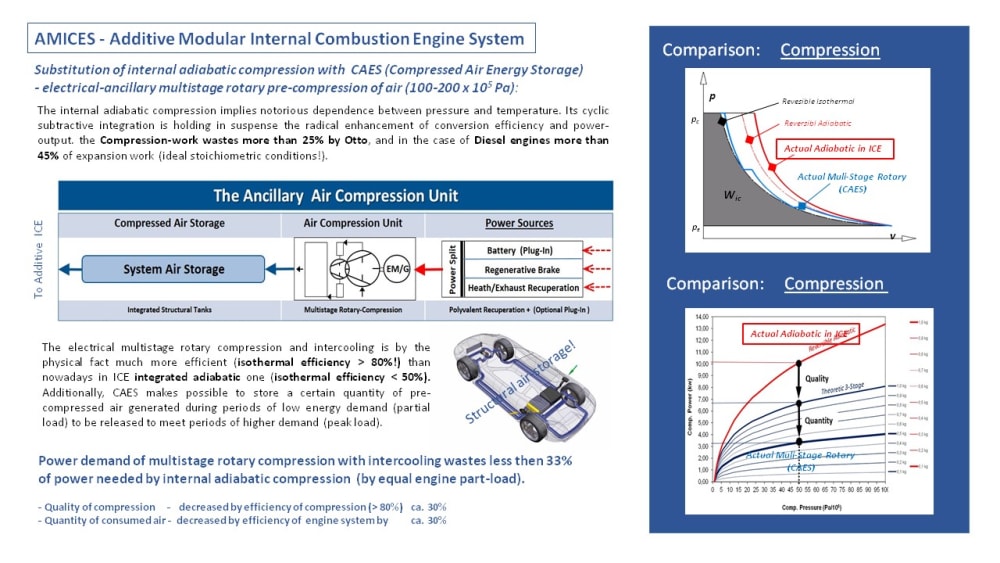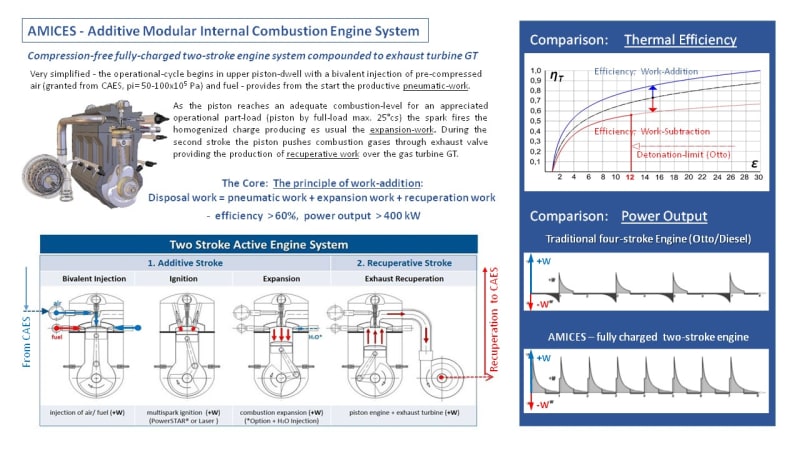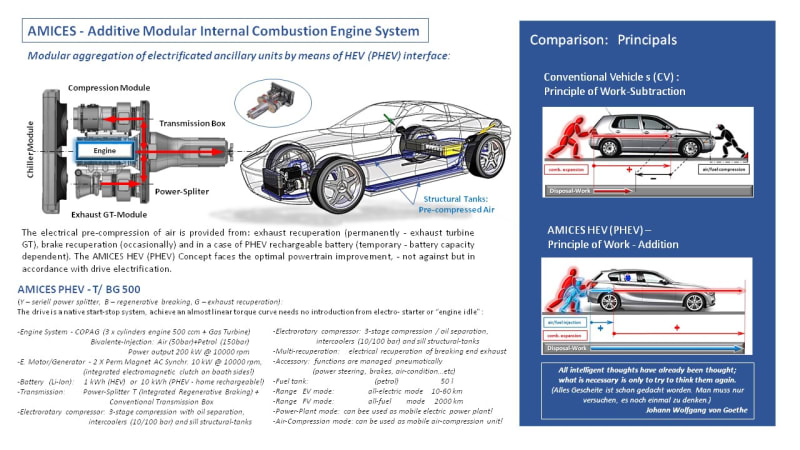Aim of this is to present the alternative HEV (PHEV) concept, potentially more efficient than fuel-cell powertrains, which can in the same time compete with the conventional vehicles (CV) in retail prize, functionality and all drive situations!
THE PROBLEM:
Despite the progress of technical science the efficiency and power-output of internal combustion engines (ICE-Otto/Diesel) is still disappointingly bad:
*The Tank-to-Wheel energy efficiency …. generally less than 22% of the energy contained in diesel and 18% of that contained in petrol – the rest is lost as heat!
European Association for Battery Electric Vehicles, 2008*
Paradoxically - the inefficiency is frequently addressed on indispensable thermic losses, whereas by default its thermal efficiency depends exclusively from the compression ratio.
According to self-respiration postulation traditional ICE uses mainly four "strokes", of which — the compression stroke (high consumptive) and power stroke (high productive) are power significant. Its subtraction-principle denotes that the considerable proportion of work produced by the combustion should be cyclic-reduced by the work needed for initial adiabatic-compression of charge, whereas the compression of air takes the significant part of it.
Hereby the internal adiabatic compression (notorious dependence pressure-temperature) and its cyclic subtractive integration is holding in suspense the radical enhancement of conversion efficiency and power-output. According to exact thermodynamic calculations the compression-work wastes more than 25% by Otto, and in the case of Diesel engines more than 45% of expansion work (ideal stoichiometric conditions!).
THE SOLUTION:
Although the initial-compression of air is indispensable, it is not from its operational-run indivisible. So to clear the way for the significant enhancement of conversion efficiency and power output a newly ICE-Concept based on ancillary pre-compression and CAES unveils in three essential steps:
1) Introduction of ancillary pre-compression of air (100-200 x 105 Pa) by means of CAES (Compressed Air Energy Storage).
2) Introduction of compression-free two-stroke engine system. It consist of a fully-charged piston engine, parallel compounded to an exhaust turbine GT. This piston engine is similar to conventional ICE, whereas unlikely the inlet-valves are substituted with air-injectors and the piston closes the cylinder-volume at the upper dwell-point theoretically to zero (volumetric efficiency=1).
Its operational-run introduces the principle of work-addition (work cumulation = pneumatic work + expansion work + recuperation work) - granted thus with high efficiency and power output.
3) Modular aggregation of ancillary units by means of HEV interface. The already coexistent electric drive of HEV-s (supported additionally with electricity produced by exhaust turbine GT) is here used for pre-compression of air – it closes in the same time the needed energetic system-balance!
Under physical lows being considered - the concept can radically increase the efficiency (>60%) and power-output (>400 kW) of future powertrains. Versatile aspects and technological obstacles of newly engine concept are being progressively in exploration by means of CFD simulations on University-Split/Croatia. The theoretical revisions of its physical-principle performed by means of Ricardo-WAVE* simulations have already confirmed the huge-potential in enhancement of conversion efficiency (>2X) and power output (>4X) compared to contemporary combustion engines (University Split - FESB, Prof. Ph.D. G.Radica/Croatia*).
Like this entry?
-
About the Entrant
- Name:Hrvoje Salinovic
- Type of entry:individual
- Software used for this entry:CATIA V5, Ricardo Wave, Lotus
- Patent status:patented








